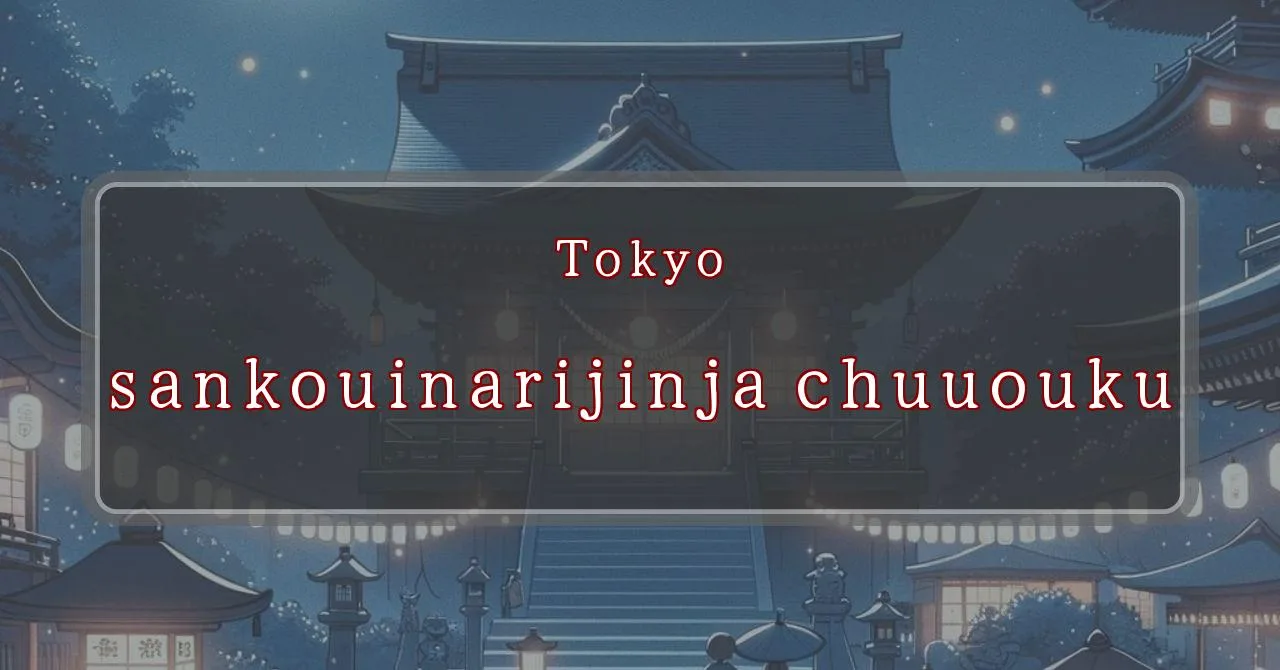Tokyo’s summer festival, where history and nature meet
Basic Information
Sanno Inari Shrine is a Shinto shrine located in Nihonbashi-Horidomecho, Chuo-ku, Tokyo, Japan.
- Address: 2-1-13 Nihonbashi-Horidomecho, Chuo-ku, Tokyo 103-0002, Japan
- Phone Number: N/A
- Access: 3-minute walk from人形町駅 A5 Exit on the Tokyo Metro Hibiya Line or Toei Asakusa Line
- Festival Days: July 15th (Mon) and 16th (Tue), 2024
Main Events and Attractions of the Festival
The Sanno Inari Shrine summer festival is a lively and colorful event that attracts many visitors each year. The main events and attractions of the festival include:
Mikoshi Procession
One of the highlights of the festival is the mikoshi procession, where a portable shrine is carried through the streets of the neighborhood. The mikoshi is decorated with colorful tapestries and streamers, and it is carried by a team of people. The procession is accompanied by music and dancing, and it creates a festive atmosphere.
Lion Dance
Another popular attraction of the festival is the lion dance. A team of performers wearing lion costumes dances to the beat of drums and gongs. The lion dance is said to bring good luck and fortune, and it is a popular attraction for both children and adults.
Stalls and Games
The festival also features a variety of stalls and games. Visitors can enjoy traditional Japanese food and drinks, as well as play games such as ring toss and goldfish scooping. There are also a number of souvenir shops where visitors can purchase items such as t-shirts, hats, and keychains.
Fireworks Display
The festival concludes with a spectacular fireworks display. The fireworks are launched from a nearby park, and they light up the night sky with their vibrant colors. The fireworks display is a popular attraction for both locals and tourists, and it is a fitting end to the festival.
Blessings and Deities
Sanno Inari Shrine is dedicated to three deities:
- Sanno Inari Okami: The deity of rice and agriculture, as well as the guardian deity of the Sanno Festival.
- Ukanomitama no Okami: The deity of food and nourishment.
- Sarutahiko Okami: The deity of guidance and crossroads.
Visitors to the shrine pray for good harvests, prosperity in business, and safe travels.
Origin and History
The origins of Sanno Inari Shrine are unclear, but it is believed to have been founded in the early Edo period (1603-1868). The shrine was originally located in the Nihonbashi district of Tokyo, but it was moved to its current location in 1923 after the Great Kanto Earthquake.
Sanno Inari Shrine is a popular destination for worshippers and tourists alike. It is particularly known for its annual summer festival, which is held in July. During the festival, the shrine is decorated with colorful lanterns and streamers, and there are a variety of events and activities, including a mikoshi procession, a lion dance, and a fireworks display.
Tips and Notes for Visitors
- The shrine is open daily from 9:00 AM to 5:00 PM.
- Admission is free.
- The shrine is a popular destination for weddings and other ceremonies, so it is best to avoid visiting during these times.
- There is a small parking lot available for visitors.
- The shrine is located in a residential area, so please be respectful of the neighbors.
Parking Information
There is a small parking lot available for visitors to Sanno Inari Shrine. The parking lot is located behind the shrine, and it can accommodate about 10 cars. The parking fee is 500 yen per day.
Popular Stalls and Food Carts in Recent Years
| Type of Stall | Description |
|---|---|
| Takoyaki | A staple at Japanese festivals. Characterized by a crispy outside and a creamy inside. |
| Jaga Butter | A simple yet popular snack of hot potatoes lavishly topped with melted butter. |
| Baby Castella | Small castella cakes, sweet and fluffy treats enjoyed by children and adults alike. |
| Grilled Ayu with Salt | Fresh ayu fish grilled whole with salt, a savory taste of Japanese summer. |
| Shaapin | A unique gourmet item influenced by foreign cuisine, with a chewy skin wrapping the filling. |
| Okonomiyaki | A Japanese grilled dish where you often choose your own ingredients for a personalized flavor. |
| Cotton Candy | A fluffy, sweet snack that’s extremely popular with children. |
| Chocolate Banana | A banana coated in chocolate, a fun and visually appealing dessert. |
| Kushiyaki | Various types of ingredients skewered and grilled, an easy-to-enjoy snack. |
| Yakisoba | Fried noodles mixed with a special sauce, a fast food favorite in Japan. |



